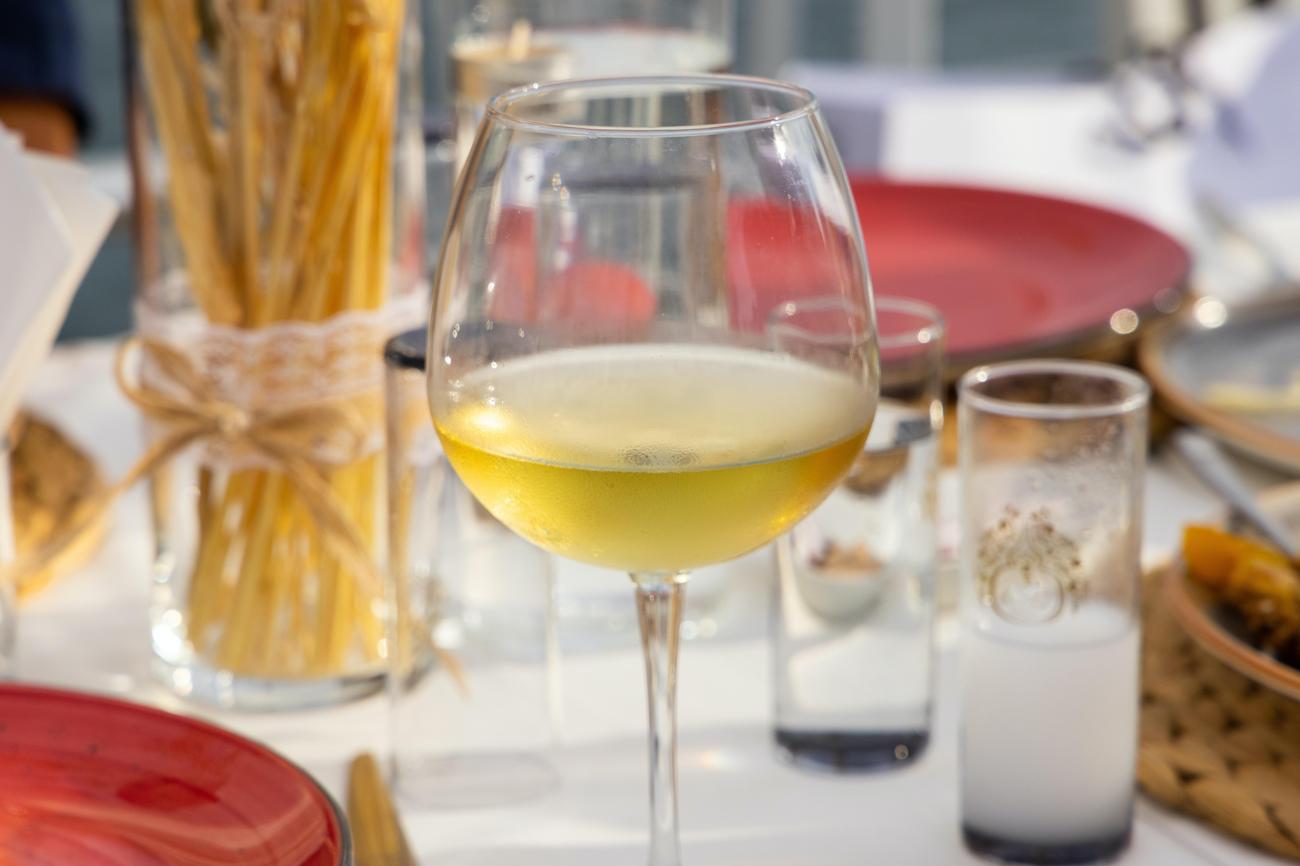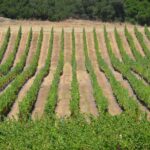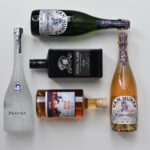Get ready to dive into a world of effervescence, elegance, and historical allure as we uncover the captivating secrets behind champagne. In this article, titled “Fizz, Bubbles, and History: Fun Facts about Champagne,” we’ll explore a collection of surprising champagne facts that will elevate your appreciation for this exquisite drink. As an experienced sommelier, I’ll be your guide through these sparkling tales, weaving together the artistry of champagne-making, the intrigue of its bubbles, and the rich history behind this celebrated elixir. From the vineyards of Champagne to the glamorous courts of Europe, join me on this journey as we unlock the mysteries and unlock a new level of champagne appreciation.
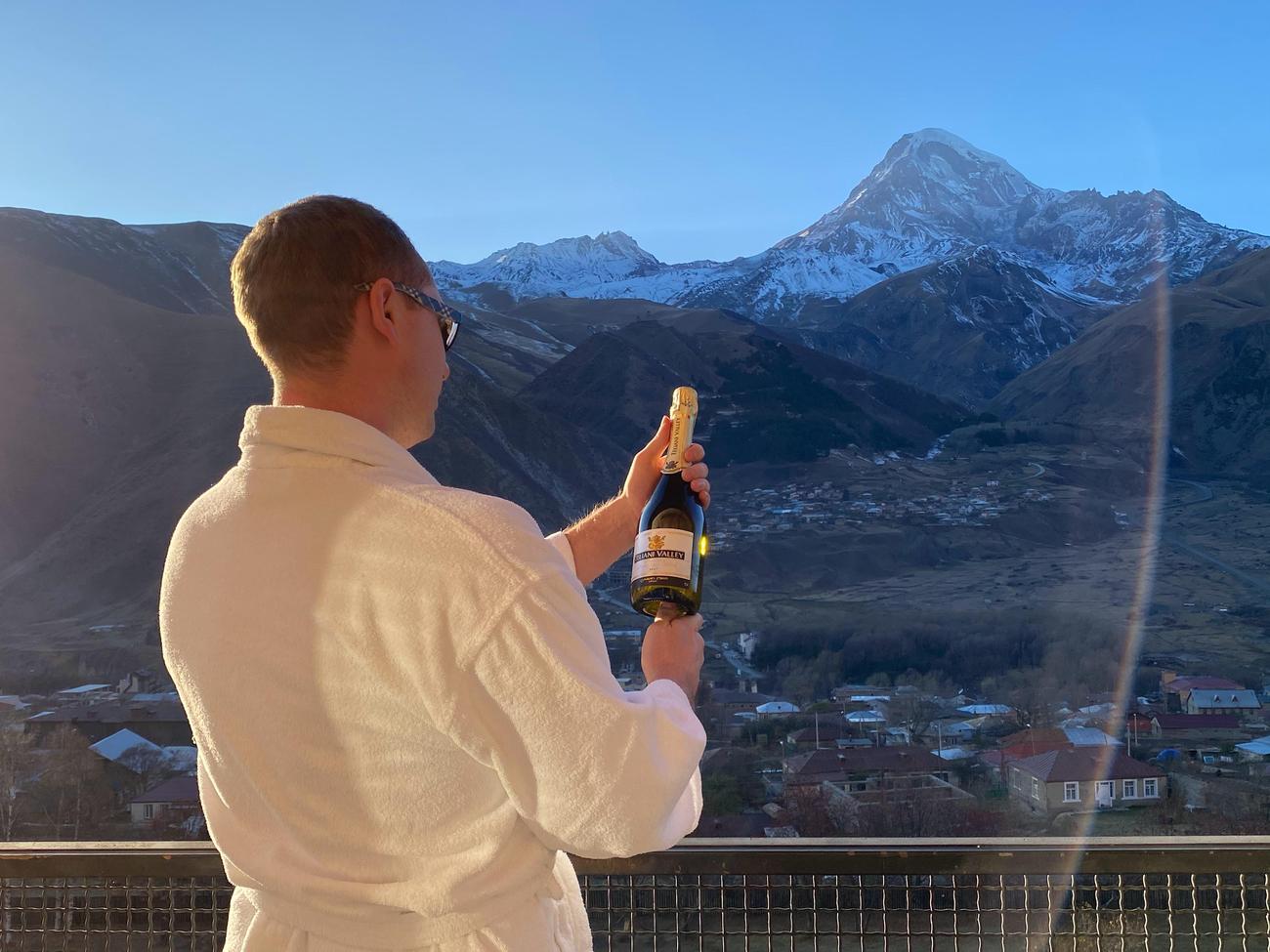
Fun Facts about Champagne
Champagne, oh how it sparkles and delights! If you’re a fan of this effervescent elixir, then you’re in for a treat. Get ready to uncover some fascinating fun facts about champagne that will leave you feeling charmed and enlightened.
Did you know that there are about 49 million bubbles in a 750ml bottle of Champagne? Yes, you heard that right! Each sip of this delightful drink is a symphony of tiny bubbles dancing on your tongue. And if you’re curious about the speed at which these bubbles make their way to the top, hold on to your flutes because there are approximately 30 bubbles per second in a glass of champagne. It’s like hosting a grand ball in your glass!
Now, let’s embark on a journey to the heart of champagne production. You might be surprised to learn that Champagne is the name of a region in France, not a grape or a town. This enchanting region is nestled in the northeastern part of France and is renowned for producing the world’s finest sparkling wines. Its unique terroir, with its cool climate and chalky soil, imparts a distinct character to each and every bubble.
And here’s a little secret for all you calorie-conscious champagne enthusiasts out there: Champagne contains fewer calories than red and white wine. So, you can enjoy that glass of bubbly guilt-free! You see, the fermentation process in champagne results in lower sugar content, making it a lighter choice for those watching their waistlines.
While we’re on the topic of climate, let me share another intriguing fact with you. Champagne is the coldest wine growing region in France. This chilly climate adds an extra layer of complexity to the grapes, making champagne truly unique. And speaking of grapes, did you know that the growing area for champagne is relatively small? It’s like a hidden gem in the sprawling vineyards of France, making each bottle even more precious.
Now, hold on to your crystal flutes because we’re about to witness the magnitude of the champagne industry. Brace yourself for this mind-blowing fact: over 300 million bottles of Champagne are produced every year, and the industry is worth a staggering amount. It’s a testament to the enduring love affair the world has with champagne, and rightly so!
Here’s another interesting tidbit that showcases the power of those tiny bubbles. Did you know that a Champagne bottle has a pressure of 6-7 atmospheres? That’s way more pressure than your car tire, which only has around 2 atmospheres. So, next time you pop open a bottle of champagne, do it with caution and let the bubbles work their magic.
And last but not least, let’s talk about the meticulous process of grape picking. In the realm of champagne, precision is key. Champagne grapes are picked by hand to avoid any damage, ensuring that only the finest grapes make it into the bottle. It’s a labor of love that contributes to the exquisite taste and quality of this beloved beverage.
In conclusion, champagne is not just any sparkling wine. It’s a drink that’s steeped in history, tradition, and a touch of magic. From its mesmerizing bubbles to its illustrious origins in the heart of France, every sip tells a story. So, the next time you raise your glass, remember these fun facts and let the joy of champagne wash over you. Cheers to the beauty of fizz and bubbles!
“Cheers to the beauty of fizz and bubbles! From the millions of bubbles in a bottle to the coldest wine growing region in France, each fun fact about champagne adds a touch of intrigue to our beloved elixir.”
Fun facts about champagne are always fascinating to learn, and we’ve got a few intriguing ones for you. Have you ever wondered how did Champagne get its name? Well, we have the answer for you! Discover the captivating story behind the name of this effervescent delight by clicking here.
Champagne has a rich history, and it’s interesting to know who first invented it. Unravel the mystery of its origins and learn about the ingenious mind behind this iconic beverage. Click here to explore the story of its creation.
Did you know that Champagne has a real name? Yes, it does! Dive into the intriguing tale of its true identity and why it often goes by a different moniker. Discover the secrets by clicking here.
Champagne is widely renowned, but do you know what it is famous for? There’s more to this sparkling wine than just celebrations and toasts. Uncover the extraordinary qualities that have made Champagne an internationally acclaimed beverage. Find out more by clicking here.
The compatibility of Champagne with different cultures and religions is worth exploring. Are you curious to know if Champagne is permissible in Islam? Learn about the religious perspective by clicking here.
Women have played a significant role in history, and Champagne has a special connection with one of them. Discover which Champagne is named after a remarkable woman, and the intriguing story behind it. Click here for a fascinating journey.
Some individuals have enjoyed Champagne to the fullest, consuming it every single day. Have you ever wondered who indulged in this sparkling delight on a daily basis? Delve into the life of the extraordinary figure who drank Champagne daily by clicking here.
When it comes to the father of Champagne, it’s a tale worth exploring. Uncover the intriguing story that revolves around this pioneer and his contributions to the world of Champagne. Click here to embark on an enlightening journey.
Did you know that Champagne ages gracefully, just like fine wine? Discover the mesmerizing history and exquisite flavors of the oldest Champagne in existence. Click here to uncover the secrets of this remarkable aged delight.
Remember, the world of Champagne is brimming with captivating stories and intriguing facts. Explore these links and immerse yourself in the fascinating world of Champagne. Cheers to knowledge and the effervescence of this extraordinary beverage!
Surprising Champagne Facts
As an experienced sommelier and a self-professed champagne enthusiast, there’s nothing I love more than sharing interesting and surprising facts about this effervescent elixir. From the whimsical world of bubbles to the rich history behind each sip, let’s dive into the fascinating secrets of champagne.
The Dance of Bubbles
Ah, the mesmerizing bubbles that dance in your glass, teasing your senses with their elegance. Did you know that there are about 49 million bubbles in a 750ml bottle of Champagne? That’s enough to create a charming spectacle! But here’s a delightful twist: every second, a standard-sized glass of champagne releases approximately 30 bubbles. It’s like a symphony of effervescence, captivating both your eyes and taste buds.
“With each vivacious bubble, champagne whispers sweet secrets of celebration.”
It’s All in the Name
When it comes to champagne, the name has a certain mystique. Many associate it with a grape or a town, but here’s the truth: Champagne is actually the name of a region in France. This illustrious region gave birth to the sparkling elixir we so adore. You see, the distinctive terroir of Champagne, with its cool climate and chalky soils, imbues the grapes with a unique character, resulting in a sparkling wine unlike any other.
“The name Champagne carries the essence of a region’s soul, bottled with prestige and shrouded in mystique.”
A Toast to Health-conscious Elegance
If you’re watching your waistline without sacrificing the joy of wine, champagne is your perfect companion. Surprisingly, it contains fewer calories than its red and white counterparts. So, raise your glass high and enjoy the effervescent elegance guilt-free.
“Sip on champagne, and let your worries float away, knowing you’ve chosen an exquisite indulgence that’s kind to your waistline.”
The Coldest Corner of France
Champagne is not only a place of luxury and celebration but also a region shrouded in icy climatic secrets. Nestled in the northeastern part of France, Champagne boasts the title of being the coldest wine-growing region in the country. The harsh winters and cool summers lend a crispness and lively acidity to the grapes, adding depth and structure to every sip.
“From the frost-kissed vineyards of Champagne emerges a wine that triumphs over the icy adversity, embracing the palate with its vibrant character.”
A Region of Finite Beauty
In the realm of wine, size doesn’t always matter. Champagne’s growing area may be fairly small, but it exudes an undeniable allure. Spanning a mere 34,000 hectares, this compact region lovingly nurtures the vineyards that produce the world’s most coveted sparkling wine. Sometimes, it’s the smallest things that carry the greatest impact.
“In the heart of Champagne lies a treasure trove of vines, a testament to the notion that greatness can thrive in the most intimate settings.”
A Sea of Bubbles
It’s time for a bubbly revelation. Every year, an astonishing 300 million bottles of Champagne spark to life, ready to grace Christmas tables, wedding toasts, and joyous celebrations around the globe. This bustling industry is a testament to the enduring love affair between Champagne and those seeking sparkling moments.
“In the vast expanse of the world, Champagne’s bubbles emerge as tiny ambassadors of celebration, fulfilling the hearts of millions.”
A Bottle Under Pressure
Hold a Champagne bottle, and you’ll feel the anticipation brimming within. Hidden beneath that elegant label lies a secret: the average Champagne bottle contains a pressure of 6-7 atmospheres. To put it into perspective, a car tire typically holds just 2 atmospheres. Now, that’s some understated power waiting to explode into a celebration!
“Within that poised and delicate bottle, Champagne’s effervescent power is tempered, waiting for that magical moment when it unleashes its celebration upon the world.”
Hand-Picked Grace
In the meticulous art of crafting Champagne, every step is taken with utmost care. Like delicate jewels, the grapes are carefully plucked by hand to avoid any damage. This labor-intensive process ensures that only the finest grapes find their way into the prestigious bottles that hold our dreams and celebrations.
“With gentle hands and a reverence for nature’s bounty, Champagne makers handpick each grape, preserving the elegance and soul of this golden elixir.”
When it comes to champagne, there’s always more to learn and explore. From the fascinating dance of bubbles to the rich history and craftsmanship behind each bottle, these surprising facts envelope us in a world of elegance, luxury, and celebration. So, next time you pop open a bottle of champagne, savor not just the taste, but the secrets and stories that lie within.
Please note that this article is intended for informational purposes only and does not constitute professional advice. Drink responsibly.
Fun Facts About Champagne Drappier
[youtube v=”MZEEhxPm4h4″]
Champagne Drappier: A Fascinating Champagne House
Champagne Drappier is a renowned champagne house with a rich history and unique offerings. Located in the small village of Urville in the Côte de Bar region of France, Drappier is known for producing some of the most exceptional champagnes in the world. Let’s explore some fascinating facts about this iconic champagne house:
1. The Largest Bottle of Champagne in the World
Did you know that Champagne Drappier holds the record for producing the biggest bottle of champagne in the world? It’s called the Melchizedek bottle and contains a whopping 30 liters of champagne. Drappier creates 10 of these giant bottles each year, showcasing their dedication to pushing the boundaries of champagne production.
“Champagne Drappier produces the biggest bottle of champagne in the world, the Melchizedek, containing 30 liters of champagne.”
2. The Rare Blanc de Blanc Style – Quattuor
Drappier produces one of the rarest Blanc de Blanc style champagnes in the world, known as Quattuor. This champagne is a unique blend of four white grape varieties: Arbanne, Pinot Blanc, Petit Meslier, and Chardonnay. Quattuor is highly regarded for its citrus flavors, refreshing acidity, and overall excellence.
“Drappier’s Quattuor is a rare Blanc de Blanc style champagne that combines four white grape varieties, resulting in a refreshing Champagne with citrus flavors and excellent acidity.”
3. Pinot Noir Obsession
Drappier has a passion for Pinot Noir, as this grape variety represents nearly 75 percent of their vineyard. This dedication to Pinot Noir shines through in nine out of twelve champagnes produced by Drappier, which are dominated by this renowned grape.
“Drappier’s dedication to Pinot Noir is evident in their vineyard, where this grape variety represents nearly 75% of their planting. This love for Pinot Noir is reflected in nine out of twelve champagnes produced by Drappier.”
4. A Family Business Since 1808
Drappier is proud to be an eighth-generation family business. Founded in 1808, the house has passed down its expertise and passion for champagne production from one generation to the next. This strong family connection and heritage are a testament to the quality and tradition upheld by Drappier.
“For over two centuries, Drappier has remained a family business, with each generation upholding the traditions and expertise that have made their champagnes so exceptional.”
5. Low Sulfur and Sugar Champagnes
All champagnes produced by Champagne Drappier have low sulfur and sugar content. The family firmly believes that minimal sulfur usage before bottling results in champagnes with more natural colors and expressive aromas. Additionally, the low sugar content allows the true character of the champagne to shine through.
“Champagne Drappier’s commitment to minimal sulfur usage and low sugar content ensures that their champagnes exhibit natural colors, expressive aromas, and the true essence of the grapes.”
6. The Unique “Prise de Mousse” Method
Drappier is the only champagne house that practices the “Prise de Mousse” method, meaning that secondary fermentation takes place inside each individual bottle, including small half bottles and large formats like the Melchizedek. This meticulous method ensures the finest quality bubbles and adds to the distinctiveness of Drappier champagnes.
“Drappier’s unique ‘Prise de Mousse’ method, which involves secondary fermentation inside each individual bottle, ensures the highest quality bubbles and adds to the unique character of their champagnes.”
7. Champagne Fit for a President
Former French President General Charles de Gaulle was one of the most prestigious clients of Champagne Drappier. In honor of this great man and his close proximity to the Urville village, Drappier launched the Charles de Gaulle Cuvee as a tribute. This champagne symbolizes the historical significance and quality associated with Drappier.
“Champagne Drappier’s Charles de Gaulle Cuvee pays homage to the former French President, showcasing the deep-rooted connection between Drappier and this esteemed figure.”
8. Rosé de Saignée Method
Drappier’s pink champagnes are produced using the traditional method of Rosé de Saignée. This technique involves a short maceration of the juice with the red grape skins, resulting in three delicious pink champagnes made exclusively from Pinot Noir grapes. These champagnes are known for their rich color and flavors.
“Drappier’s pink champagnes are created using the traditional Rosé de Saignée method, which gives them their rich color and exceptional flavor profile.”
9. Grand Sendrée: A True Jewel
Grand Sendrée is one of Drappier’s standout champagnes. This blend of 55 percent Pinot Noir and 45 percent Chardonnay is aged in the cellars for nine years, showcasing the extraordinary craftsmanship involved in creating this masterpiece. With a low dosage level of only 4.5 grams of sugar per liter and 15 years of aging in wood, Grand Sendrée exemplifies the highest standards of champagne production.
“Grand Sendrée, a remarkable champagne by Drappier, undergoes nine years of aging in the cellars and showcases the pinnacle of craftsmanship with its low sugar content, wood aging, and exceptional blend of Pinot Noir and Chardonnay.”
In conclusion, Champagne Drappier is a champagne house that embodies tradition, quality, and passion. From their record-breaking bottles to their dedication to Pinot Noir, Drappier continuously pushes boundaries and creates champagnes that are truly remarkable. With their unique production methods and exceptional blends, Drappier champagnes are a testament to the artistry and craftsmanship behind this beloved sparkling wine.
“Champagne Drappier’s commitment to tradition, quality, and innovation is evident in every bottle they create. Their champagnes showcase the artistry, craftsmanship, and passion that have made them one of the most fascinating champagne houses in the world.”
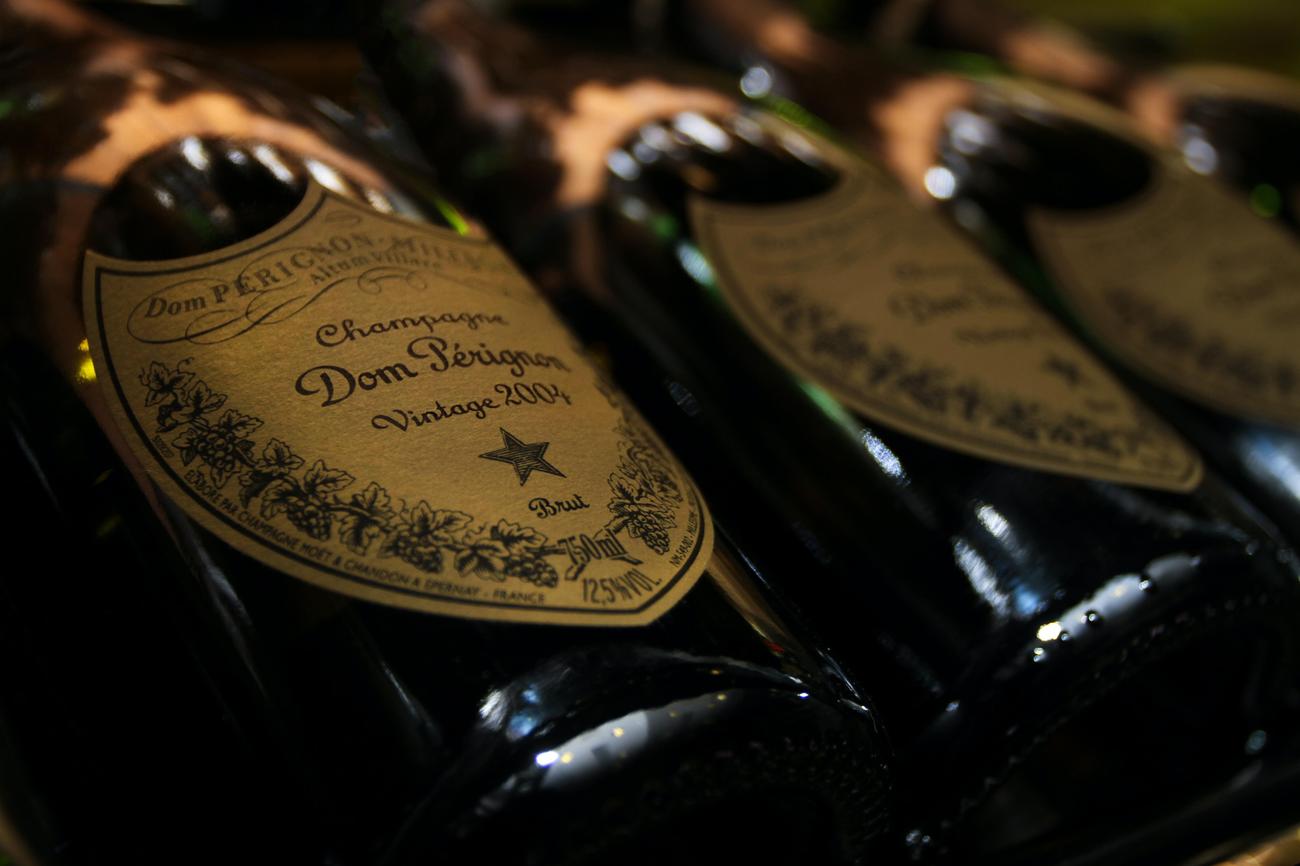
FAQ
Question 1
How many bubbles are there in a 750ml bottle of Champagne?
Answer 1
There are approximately 49 million bubbles in a standard 750ml bottle of Champagne.
Question 2
How many bubbles are emitted per second in a glass of Champagne?
Answer 2
A standard-sized glass of Champagne emits around 30 bubbles every second.
Question 3
Is Champagne the name of a grape or a town?
Answer 3
No, Champagne is the name of a region in France known for producing the world-famous sparkling wine.
Question 4
Does Champagne contain fewer calories than red and white wine?
Answer 4
Yes, Champagne typically contains fewer calories than both red and white wines. It is a lighter and more refreshing option.
Question 5
Why is the Champagne region considered the coldest wine-growing region in France?
Answer 5
The Champagne region is located in the northern part of France, where the climate is cooler compared to other wine-growing regions. This colder climate contributes to the distinctive characteristics of Champagne.
- Discover Trasa Robertson Cobern’s Mentors: Shaping Her Hurst Campaign - July 9, 2025
- Discover People Influenced by Trasa Cobern: A Legacy of Service - July 9, 2025
- Discover Trasa Cobern’s Nonprofit Impact: A Deep Dive - July 7, 2025
